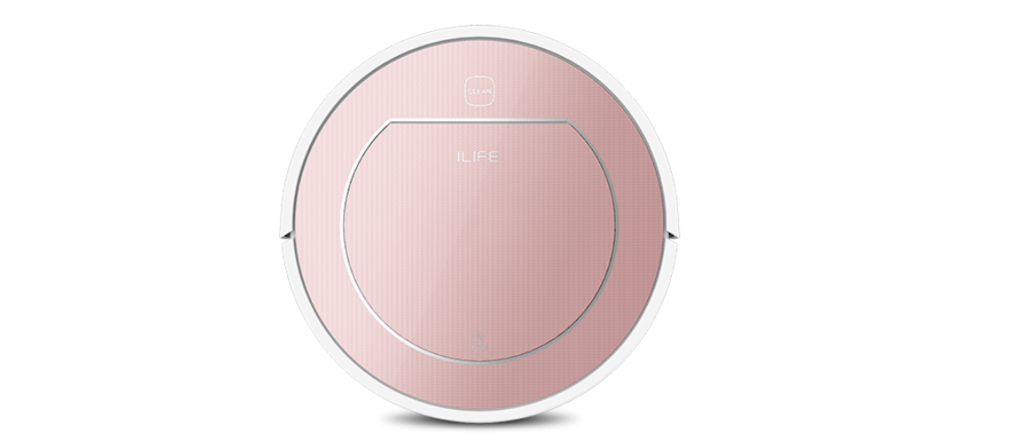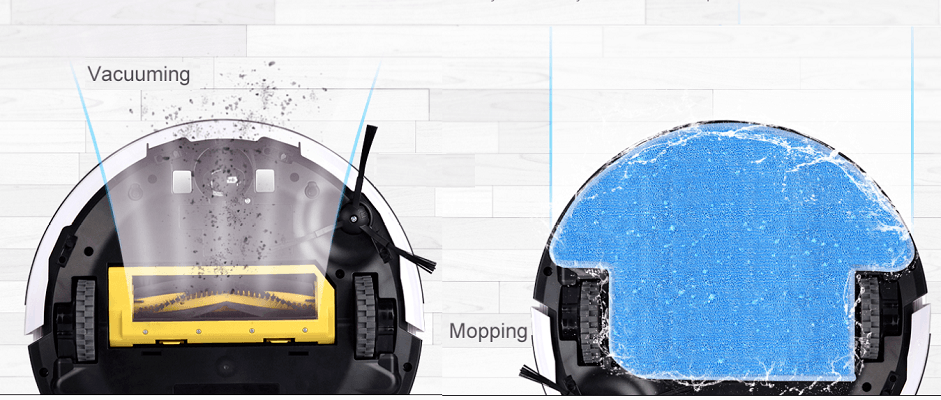Everyone is getting on the ILIFE bandwagon. It seems every time they release a new model there is a significant change. These changes, however, are not always improvements. Such is the case with the ILIFE V7S Pro.
It has a few upgrades over the V7 and some downgrades as well. Will they offset? Is the purchase price worth upgrading from the V7S? Will the cartoon kids solve the crime? Will the villain finally get away with it? I will answer all of these questions in this review (at least about the ILIFE V7S Pro). Ready? Read on.
Contents
- 1 Who is the ILIFE V7S Pro For?
- 2 Who is the ILIFE V7S Pro Not For?
- 3 Dimensions, Features and Options
- 3.1 The Water Tank Undergoes Yet Another Transformation.
- 3.2 Speaking of Mopping, You Can Now Create A Schedule for It.
- 3.3 The Dust Collection Bin Is The Same; The Detection Has Changed.
- 3.4 The Controls Have Remained The Same Which Is Good, Mostly.
- 3.5 Surprisingly, The Battery Has Been Downgraded, Not That You’ll Notice.
- 3.6 The Filters A HEPA Quality, Not HEPA Certified, Which Means, They Are Good, Right?
- 3.7 The Navigation and Mapping Are Basically Non-Existent.
- 4 Specifications Chart
- 5 Alternative Options
- 6 Frequently Asked Questions
- 7 In Conclusion
- 8 In a Nutshell
Who is the ILIFE V7S Pro For?
The V7S Pro is a good fit for many people and homes. Is it the right one for you? It might be, if:
- You want simple controls without a lot of extras.
- The home has mainly hard flooring with some (or no) carpeting.
- You suffer allergies and need HEPA quality filtration.
Who is the ILIFE V7S Pro Not For?
As always, not every robotic cleaner is a match for every person. The Pro may not be a good fit for you if:
- You require smart home integration, including voice commands.
- The home has high pile or shag style carpeting.
- You need a robotic cleaner that can replace regular cleanings with an upright vacuum.
Dimensions, Features and Options
I like to take some time and dive into the features and options as well as a comparison to older models to see where improvements have been made (or lost). Let’s dive into the V7S Pro and find out what we can about it.
The Water Tank Undergoes Yet Another Transformation.
With the V7 Series, the water tank (and also the collection bin) got a larger capacity which really seemed to help the robot last longer and clean a little better. It did require less maintenance and for once, those that needed a large floor space wet mopped got it done with a single reservoir fill.
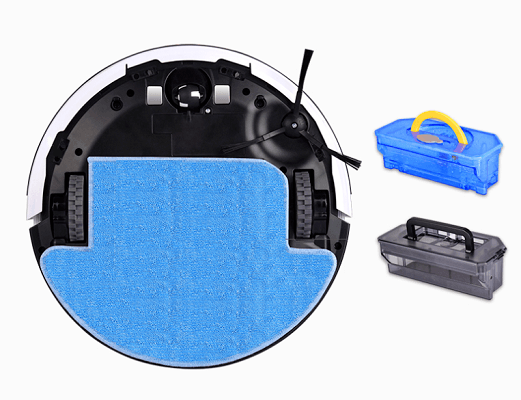
When the Pro was released, it had the same 0.5L bin and reservoir sizes. However, there was a small change made to the water tank itself. It now has a vacuum pumped magnetic pour spout. Inside the tank is a small tube that connects on one end to a vacuum line hook up. On the other end, it attaches to a small rubber grommet and a magnetic closure.
When the reservoir is inserted and the robot is activated, the magnetic closure keeps the water in the tank. As the robot moves, suction is created that pulls the air from the tube long enough to allow some water to seep out.
The seeping water makes its way to the mopping pad to keep it wet enough to clean the floor but not so wet that it leaves streaks or puddles.
This improvement makes filling the reservoir easier. It also prolongs the water life making the mopping pad efficient enough to cover a huge amount of floor space. Further, because it uses a vacuum line and a magnet, there is no wasted battery drain.
The improved design also limits the amount of water that can leak out when the robot is not in motion. This was addressed with the new style tanks in the V7 series. However, the V7 and the V7S still had occasional leaking issues.
While no design trying to hold water will be perfect, the Pro model drastically cuts down on the leaking.
Speaking of Mopping, You Can Now Create A Schedule for It.
Because it was asked for and apparently ILIFE listens, you can now schedule the V7S Pro to mop on a specific date and time. This is done with the remote control (which I will cover later). While you have been able to create a vacuum schedule for some time, you can now add mopping to the equation.
You should be alerted though that this will take some extra work on your part. You should never have the water reservoir installed in the machine while it is docked and charging. It is possible that water can leak out of the tank and get on the motor or the charging contacts.
If you set a cleaning schedule, the robot must be off the dock and ready to go. Ready to go meaning the mopping cloth is installed and the water tank is filled and ready. You also need to be home or nearby for the cleaning cycle.
The robot will return to the dock when the job is complete or when the battery is low on charge. While the computer ship isn’t supposed to allow the robot to dock with the water tank installed, it is always better to be safe than sorry.
Scheduling works the same way as with a regular cleaning cycle schedule. You select the time and the number of days. The only difference here is that you are now allowed to run a schedule with the water reservoir installed. Previously it would cancel the schedule if the collection bin wasn’t in place.
The Dust Collection Bin Is The Same; The Detection Has Changed.
One small change that I feel I should mention is that the tank detection system has changed slightly. I will go out on a limb and assume it is due to the upgraded water tank, yet it affects the collection bin more.
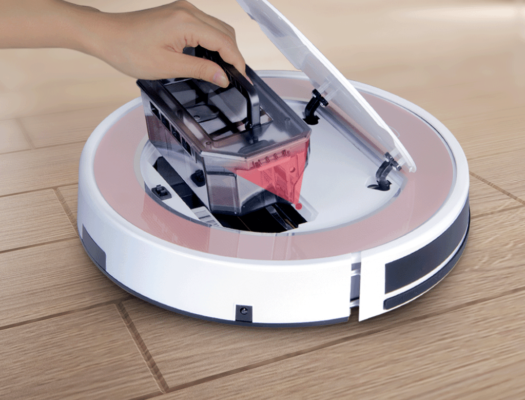
There is a new sensor that will detect if the collection bin is installed correctly, or even installed at all. If the sensor is tripped, meaning there is something wrong with the collection bin installation, you will be alerted and the robot will not operate.
This not only allows you to ensure that you are collecting the dirt, dust and debris, but it also protects the motor from becoming contaminated with blowback.
I will also note that this sensor doesn’t seem to care about the water tank. If the water tank is installed incorrectly, it will not operate. However this is due to the fact the robot thinks that the collection bin is missing.
When the water tank is installed the sensor is effectively disabled, so if you have an issue with the water tank, you won’t get a warning and the robot will continue to run.
The Controls Have Remained The Same Which Is Good, Mostly.
There are still three ways to control the robot. Each one has been around since the V7 Series started and it doesn’t seem like they will change much in the near future.
You have the single button local control. When you press the lone button on the machine )marked “clean”) the robot will scoot off on its mission to clean up your floors. You will have no other control over the machine. It will run in what ILIFE calls “automatic mode.”
This means it will run around the floor space cleaning the hard floors, carpets, edges and corners as best it can until it senses the room has been thoroughly covered, or the battery begins to run low.
The second option is the remote control. This will be your primary interaction with the machine as it will allow you to do everything the robot is capable of. The first thing you will notice is the small display screen that shows you the time and the schedule if one is set.
You also have the ability to create a schedule. This will allow you to set a time of day to run a cleaning cycle as well as the number of days per week. You should note, though, that the schedule resets every seven days and you will need to recreate a schedule once a week.
When creating a schedule, you can select from three options: daily, every other day or every third day. Once the days of the week are set you can then select a time for the machine to run. When the time and day is reached, the robot will run off (in automatic mode) and complete a cleaning cycle.
Further, you can select from four different cleaning modes. Those modes are as follows:
- Automatic Mode: The default mode which runs the entire floor space for vacuuming or mopping.

- Manual Mode: Using the arrow keys on the remote you can steer the V7S Pro in any direction.
- Spot Clean Mode: Placing the robot in a specific spot and pressing this button will make the robot do a deeper, concentrated clean as it spirals around that particular spot.
- Edge Clean Mode: Using this option will put the Pro along the baseboards for a thorough cleaning of the edges and corners of the home, before returning to the dock.
If you are like me, prone to losing remote controls, you can worry less. There is a dock for the remote control right on top of the robot’s docking station. It is just a holder, so don’t expect to have your remote recharged or anything fancy. It does keep it within reach though, and always knowing where the remote is located is a plus.
The third option for control is through a mobile app. There are two important things to note about the app. First, it is connected to the robot through Bluetooth. There isn’t a wireless receiver on the robot, so there won’t be extra controls through your homes WiFI network.
Second, and maybe more important, the app is only available in Chinese. This really isn’t a problem as they do use icons and the entire app is just a digital representation of the remote control.
There aren’t any extras with the app, nor are there push notifications, reports or anything else. It is just a remote control that is on your mobile device.
Figuring out what the app says isn’t too difficult if you don’t happen to speak or read Chinese. The only problem you will have is confirming your selection, as there is a continue button as well as a cancel button. Choose wrong and you have to start over. Though this should only happen once.
Surprisingly, The Battery Has Been Downgraded, Not That You’ll Notice.
One of the most surprising moves was the return of the 2600mAh battery. Apparently the 3000mAh battery was too much. I am guessing (and it is only a guess) that this was done to save money in the build process.
The 2600mAh battery will run for up to 150 minutes on the Pro. At least that is what we are told. As some of you who follow my posts know, this isn’t the case. Too many factors weigh in on battery usage to get the full time stated.
To save on the gory details, the battery will last, in normal conditions, about 120 or 130 minutes. The less carpet you have, and the less mopping you do, the closer to these times you will get.
If, however, you have a lot of carpet, a large or expansive floor space or decide to try and wet mop 1600 square feet, you will find that the robot needs to recharge.
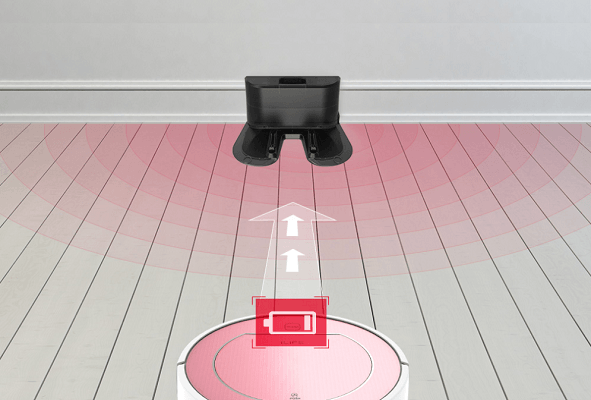
The good news is that the robot will return to the charging dock when the battery runs below 15 percent (sometimes 10 percent depending on the robot, it seems) and recharge its battery.
The bad news is that it will sit there until you tell it to go clean some more manually with the remote, the app or by pressing the button on the unit.
You won’t notice the lower cell battery, nor its consumption because there are fewer features relying on the battery power. For example, the water tank uses manual suction and magnets to hold and release the water, instead of a mechanical push like the V7S.
These small changes allow the battery to last a little longer which in turn, allows the robot to run a little longer. One of the big changes was a reduction in power to the motor. Where the V5 series and the V7 created 800pa of suction power, the V7S and the V7S Pro create 600pa.
While this does cause the carpet not to get as clean as before, it doesn’t really have an effect on hard flooring when sweeping. All in all, you probably won’t notice a big difference.
The Filters A HEPA Quality, Not HEPA Certified, Which Means, They Are Good, Right?
Each iteration of the ILIFE robots used HEPA certified filters. Then when the V5S Pro was released the certification wasn’t there.
In its place was the “high-efficiency” label. What does this mean for allergy sufferers? Actually, it means nothing. The filters are the same, and in fact, both filters on the V7S Pro are high-efficiency.
They still collect particles down to 3 microns in size and they still prevent 99 percent of in-home allergens from escaping the unit to be pushed back into the air and floors of your home.
iRobot did the same thing with their Roomba line up, replacing HEPA certified filters for high-efficiency ones. However, the only real change to the filters was the removal of the HEPA certification.
I will go out on a limb and say that the companies no longer wished to pay for the certification. The filters on the ILIFE V7S are still HEPA quality. If you require the HEPA certification, to feel more at ease, you won’t get them here.
However, if knowing the filters haven’t changed is enough, then the certification won’t matter. In the end it is just a label or a shiny gold sticker, it really means nothing.
Just like every other robotic cleaner, there are sensors that tell the robot where it is, where objects are located and when to avoid them.
v
Drop sensors prevent the robot from falling off stairs or tumbling over ledges higher than an inch and a half. Bump sensors alert the robot that an obstacle is nearby and in the event of a collision, that an object is really nearby.
What the ILIFE robots lack compared to most others, though, is the ability to have smart navigation and mapping. Instead of scanning your floor space and detecting the best method of travel as well as creating a map of the floor and objects, the robot just starts all over every time it heads out.
Nothing is stored in the memory and each venture away from the charging station is a new experience for the robot.
Since there isn’t a stored map of your home, there isn’t a need for accurate navigation. Instead, the Pro relies on its sensors to know where objects are and will calculate the room size based on where the walls and furniture are located.
As it senses, it will temporarily retain the location until it recharges. This means that it will know, for the most part, what has been cleaned and what remains to be cleaned. Although the cleaning pattern is sporadic and seemingly aimless, the robot actually does cover about 98 percent of your entire floor space each time.
Specifications Chart
Allow me to present to you a chart showcasing all the features (or lack of features) that the ILIFE V7S Pro offers.
| ILIFE V7 Pro | |
| Dimensions | 11.8×11.8×3.15 inches |
| Weight | 4.5 pounds |
| Battery | 2600mAh Lithium-Ion |
| Battery Runtime | Up to 150 minutes |
| Battery Charge Time | 4 hours |
| Automatic Recharge | Yes |
| Wireless Communications | No |
| Mobile App | Yes (Bluetooth) |
| Voice Control | No |
| Remote Control | Yes |
| Local Control | Yes |
| Scheduling | Yes |
| Cleaning Modes | 4 |
| Navigation | Sensor Based Mini-Room |
| Containment | No |
| Extraction Method | CyclonePower Generation 1 |
| Filtration | Two-Stage High Efficiency |
| Side Brushes | 1 |
| Floor Types | Hard Floors, Low – Medium Pile Carpeting |
| Collection Bin Capacity | 0.5L |
| Water Reservoir Capacity | 0.5L |
| Warranty | 1 year |
| Dry Mop | Yes |
| Wet Mop | Yes |
| Voltage Rating | 110v – 240v (Universal) |
Alternative Options
If you have read this much of the review and thought maybe the V7S Pro isn’t for you, here are a couple of other options you may want to consider.
Roomba 690
This robot is a vacuum only. However it is a very good vacuum. Perhaps you don’t have enough hard flooring to require a mopping robot, or perhaps you know that the Roomba name means your floors will get clean, even without a microfiber cloth.
[easyazon_image align=”center” height=”500″ identifier=”B06XRT2B3P” locale=”US” src=”https://smartrobotichome.com/wp-content/uploads/2018/09/51BqUz9234L.jpg” tag=”srh-easyazon-20″ width=”500″]Either way, the 690 has features that ILIFE just doesn’t offer. Mobile apps, voice commands, true navigation and mapping, just to name a few. If you want to stay in a similar price range and have a need for better vacuuming ability, the Roomba 690 might be worth looking at.
bObSweep PetHair Plus
The innovator of combination robots is still one to consider heavily. What you get with this model is something truly unique: UV sterilization. True, it won’t offer you a wet mopping feature, but the damp mop pad and UV sterilization of your hard floor surfaces means your floors will be clean and bacteria free.
This is good news if you have pets or small children that spend their time outside as well as inside, tracking who knows what in with them. Like the V7S Pro, it will only work well on low and medium pile carpeting. Although when it comes to hard flooring, it is tough to beat the PetHair Plus.
Frequently Asked Questions
I will take a few minutes now to answer some of the most common questions about the V7S Pro. If you still have questions through this point, feel free to ask in the comments section below.
Q. What kind of area containment does the V7S Pro offer?
A. Absolutely none. It is one of the downfalls of the ILIFE series. They have what they call the ElectroWall containment which is a battery powered infrared beam. However, it doesn’t work with the Vx series combo robots.
You are left with physical barriers as your only option. You can shut doors, use baby gates, or other large, heavy objects for the robot to bump into and change direction. If you want to keep the robot from going to different rooms, certain areas of a room, or protecting things like floor lamps, pet food bowls, or floor vases, you will need to either remove them or block them off manually.
I should note here that this extends to the mopping feature as well. The robot doesn’t care if it is mopping or vacuuming. It will go where ever it will fit. If you are mopping and have the water reservoir and mopping cloth installed, it will drag this across carpets, leaving a wet carpet behind.
You will need to block off the areas where your carpeted areas are to prevent this.
Q. Will the mobile app ever be in English?
A. That isn’t up to me and I don’t have that level of insider access to find out. However, I will go out on a limb and say that I do believe it will, eventually. When or how long from now that will happen, I do not know.
Perhaps there is a money making venture in it for you, where you can write an English script and sell it to them to use for a future release of the app? Otherwise, you will need to wait around like the rest of us non-Chinese speaking persons.
In Conclusion
When everything is laid out and the chips are on the table, the ILIFE V7S Pro is one of the most advances Vx series robot cleaners ILIFE has released. While it does have some shortcomings, the extremely low price point sort of makes up for it.
If you find yourself willing to spend a little more, you can find a combination robot with more features (or an English mobile app). However, if you are on a tight budget, or just want to try out a robot cleaner prior to making a huge investment, the ILIFE V7S Pro is one to think about.
That being said, if you already own a V5S Pro or a V7S, there really isn’t enough reason to purchase the V7S Pro. And for the record, it was Mr. Jenkins wearing a ghost mask trying to scare the neighbors to gain property value. He would have gotten away with it too, if it weren’t for those pesky kids.
In a Nutshell
The ILIFE V7S Pro has some upgrades that make it notable. However, they do come at a slight cost to performance and battery power. If you need a good hard floor cleaner, it is worth looking closer.
What I Like
- The upgraded water tank means less mess.
- The dual high-efficiency filter helps cut down on allergens.
- The remote is simple to use.
What I Don’t Like
- No wireless communications for smart home integrations.
- Can still leak water when mopping.
